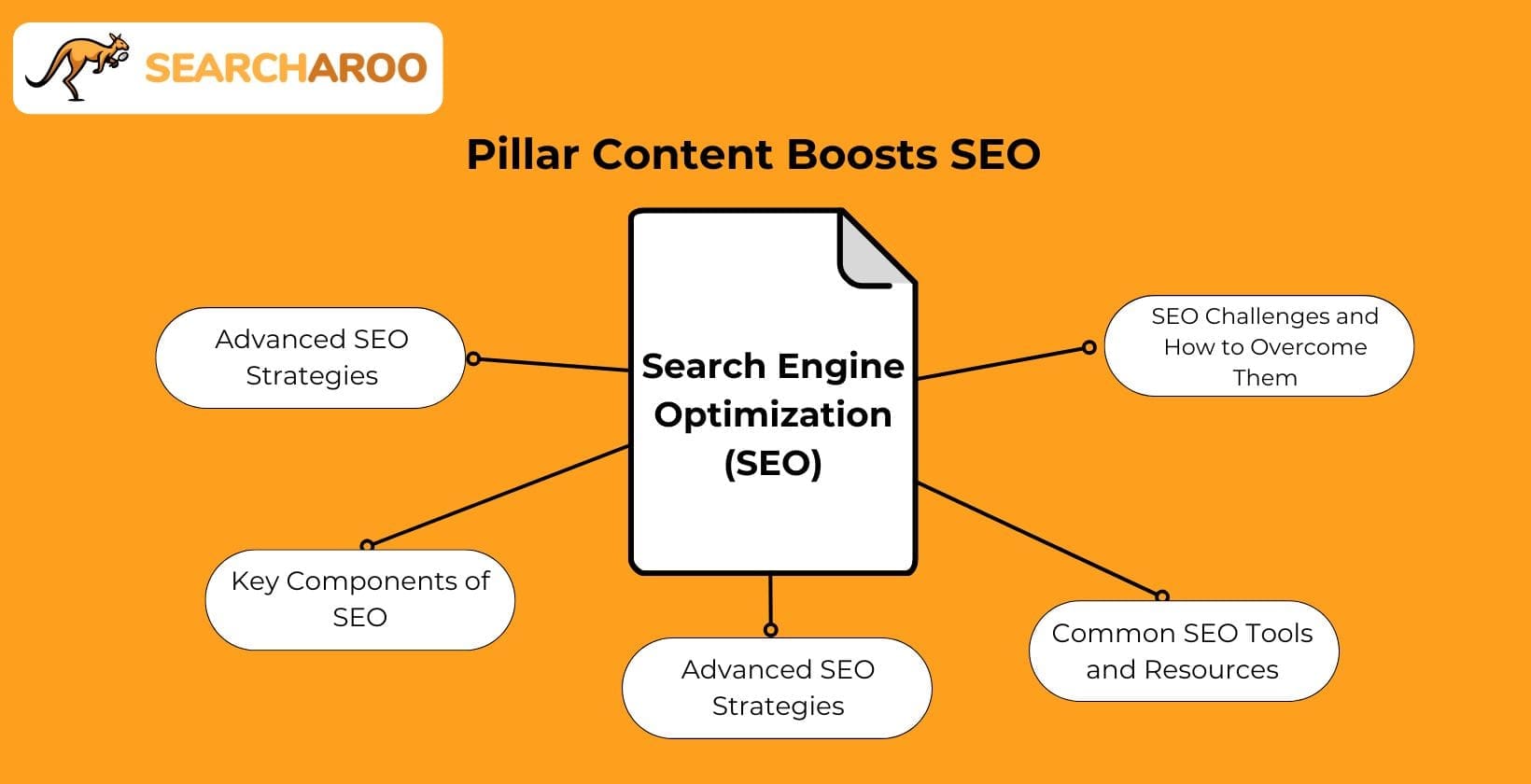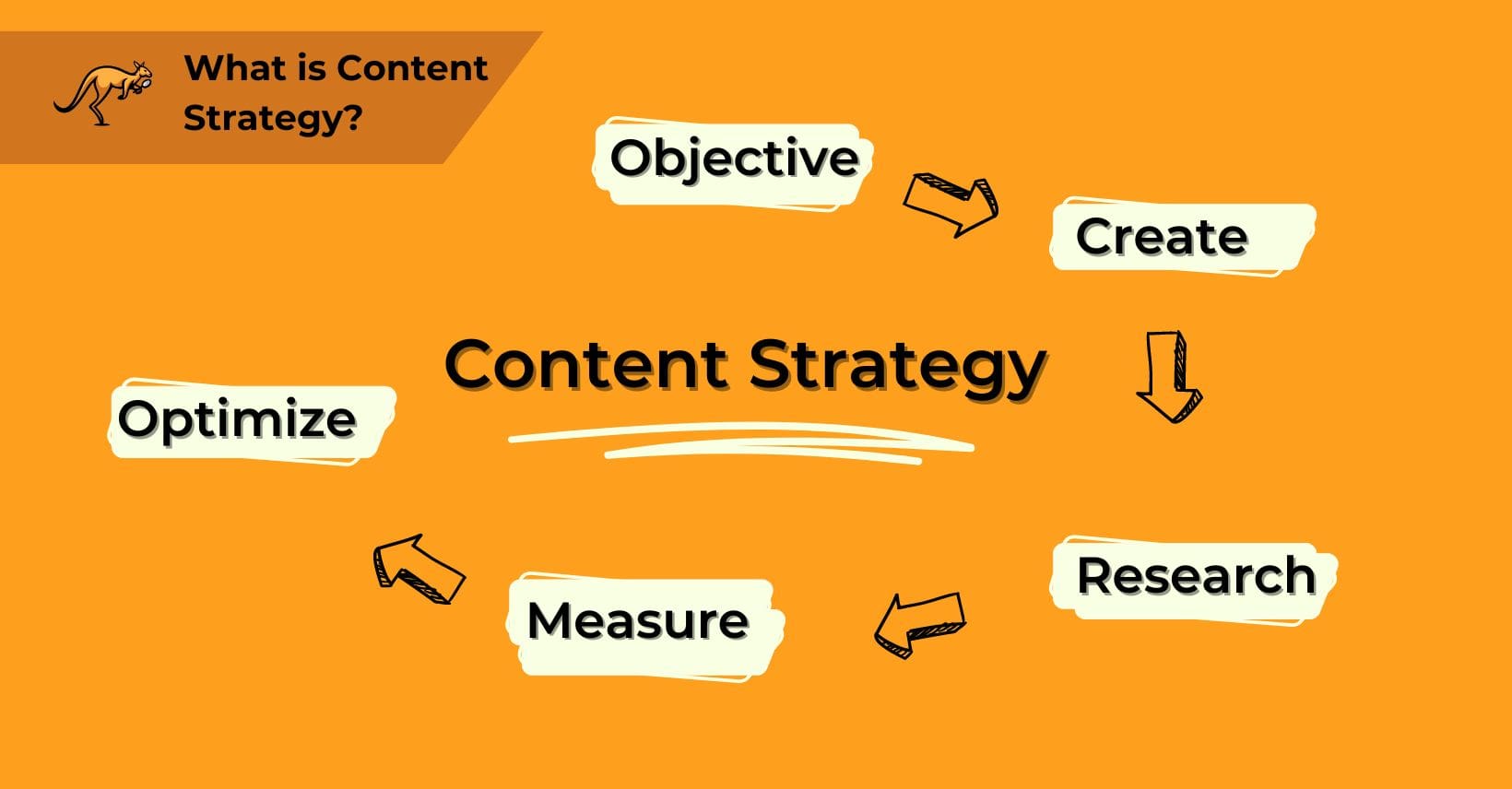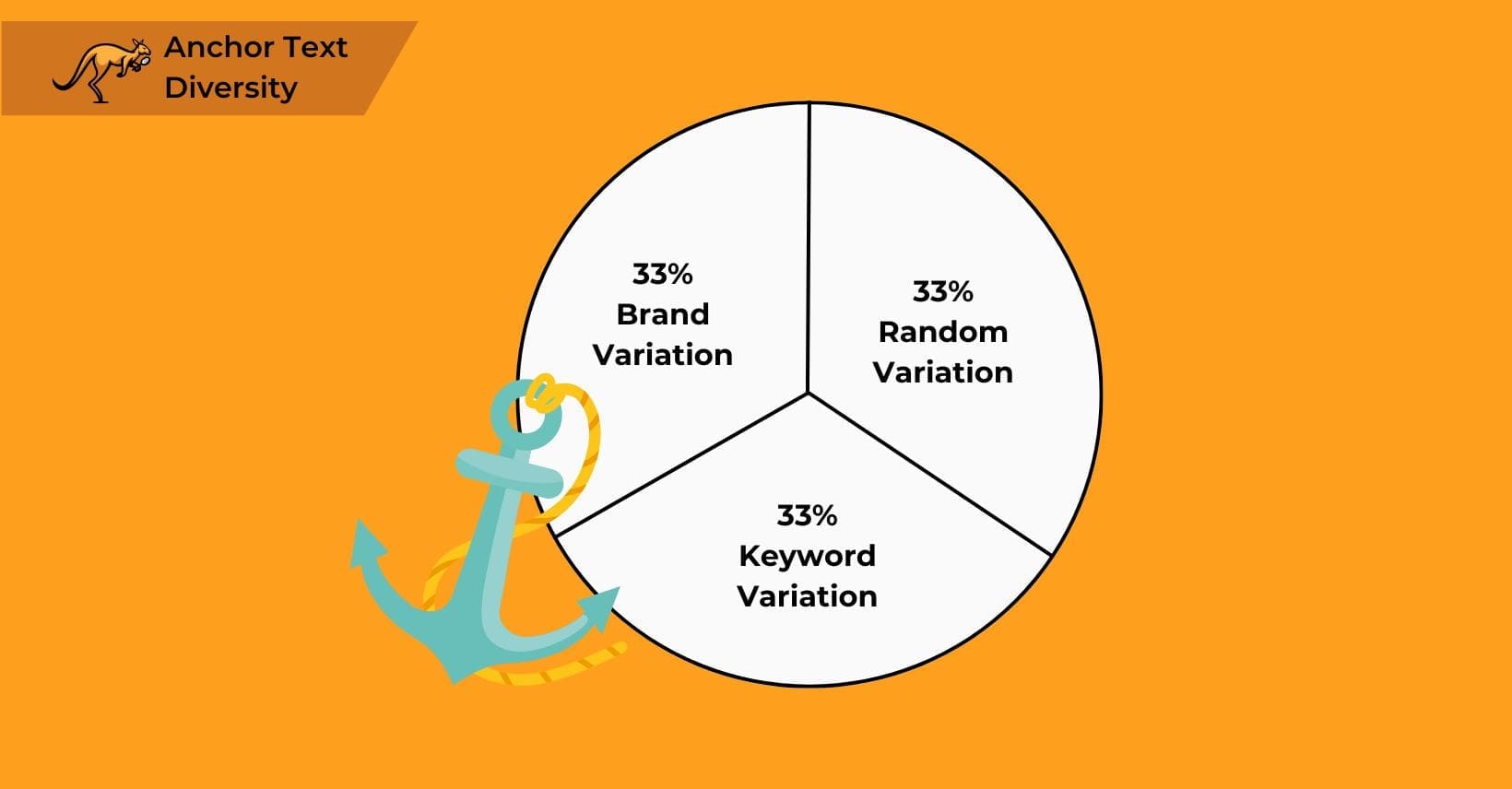Businesses need strategies that boost search rankings and improve user experience. Pillar content is a key component of an effective content marketing strategy.
This guide explains pillar content—what it is, how it improves SEO, and which types of content work best. You’ll learn why businesses should implement a pillar content strategy and how pillar pages attract high-quality backlinks, increasing domain authority.
Let’s define pillar content, its role in boosting SEO, and its importance for improving visibility and user engagement.
What is Pillar Content?
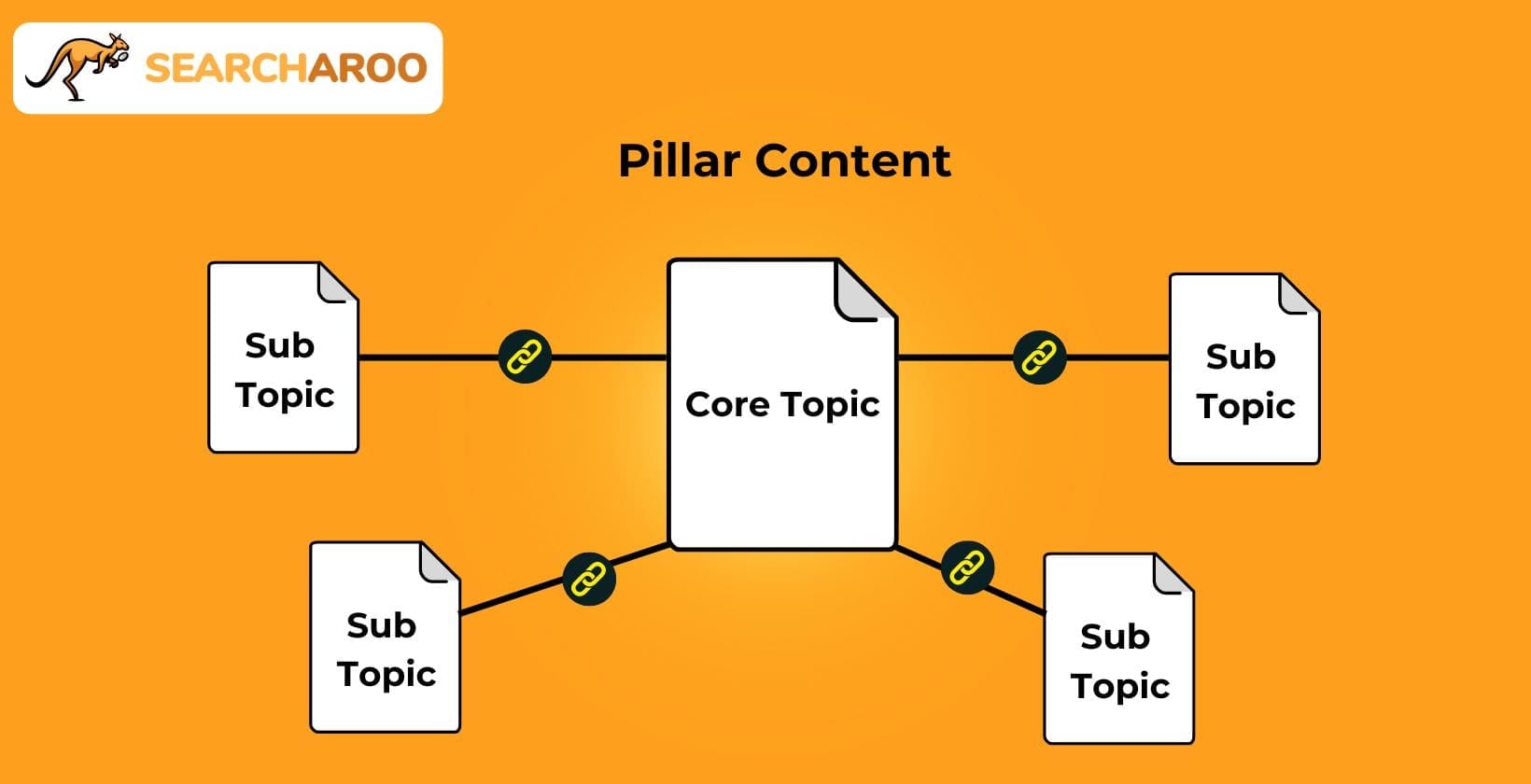
Pillar content is a central, comprehensive piece of SEO content that covers a broad topic and links to related subtopics, which serves as the foundation of a topic-based content strategy. Pillar content improves SEO by creating an organized framework that contains extensive information on a main topic, enabling users to navigate easily between related content pieces. Search engines favor this structure, boosting rankings and establishing authority. Pillar content structures information through a hierarchical arrangement where the main pillar page links to cluster content pages, providing a basis for examining its impact on SEO performance.
How Does Pillar Content Improve SEO?
Pillar content improves SEO by interlinking related content, enhancing keyword rankings, and boosting crawlability, which collectively strengthen overall site authority through demonstrated topical expertise. It signals to search engines that the site is comprehensive and authoritative, increasing authority and visibility. This structure raises organic traffic and click-through rates. Understanding the effectiveness of pillar content in SEO requires identifying the types of content that serve as the foundation for pillar strategies.
What types of content are considered pillar content?
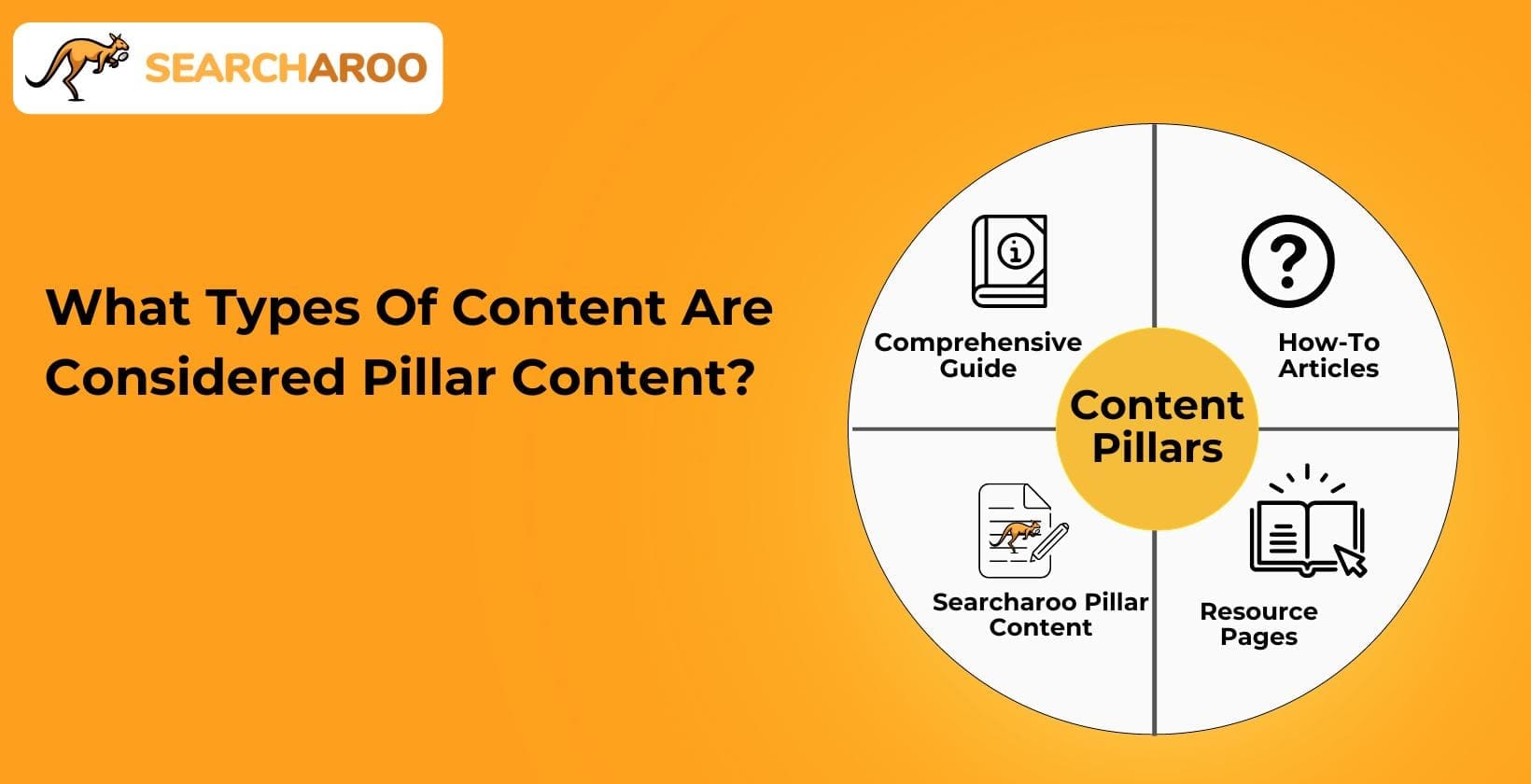
Pillar content includes comprehensive guides, how-to articles, and resource pages. Comprehensive guides cover topics in depth and link to detailed articles. How-to articles provide step-by-step instructions and links to related content. Resource pages aggregate tools and references, often earning backlinks. Searcharoo creates pillar content that aligns with business offerings, boosting authority and user engagement.
Understanding these foundational elements shows why businesses should implement a pillar content strategy to enhance online presence and authority.
An efficient pillar content strategy consists of several key components: a main pillar page that covers a broad topic, multiple cluster content pieces that address specific subtopics, strategic internal linking between related content, and regular content updates that maintain relevance.
Why Should Businesses Implement a Pillar Content Strategy?
Businesses should implement a pillar content strategy to improve SEO performance, increase domain authority, and enhance user experience. Organizing content into pillars helps search engines crawl and index pages efficiently, boosting organic rankings. Pillar content attracts high-quality backlinks and improves navigation, increasing session duration and reducing bounce rates.
How Do Pillar Pages Help Attract High-Quality Backlinks?

Pillar pages attract high-quality backlinks by offering comprehensive and authoritative content, establishing them as valuable resources. Their depth and relevance prompt other websites to reference them, driving traffic and boosting authority. This makes pillar pages ideal for earning backlinks and increasing site credibility.
Given pillar pages’ ability to attract valuable backlinks, choosing topics that align with your business goals and supporting multiple subtopics to maximize effectiveness is important.
What topics are best suited for pillar pages?
Topics suited for pillar pages align with a business’s core services and expand into multiple subtopics. These topics target high search volume and user intent, making them ideal for centralizing related content. Business-centric topics and high-volume queries attract organic traffic, enhance brand authority, and strengthen content strategy.
Understanding which topics to focus on leads to determining the number of pillar pages your website should have. The number of pillar pages needed depends on covering essential topics comprehensively in your content strategy.
How many pillar pages should our website have?
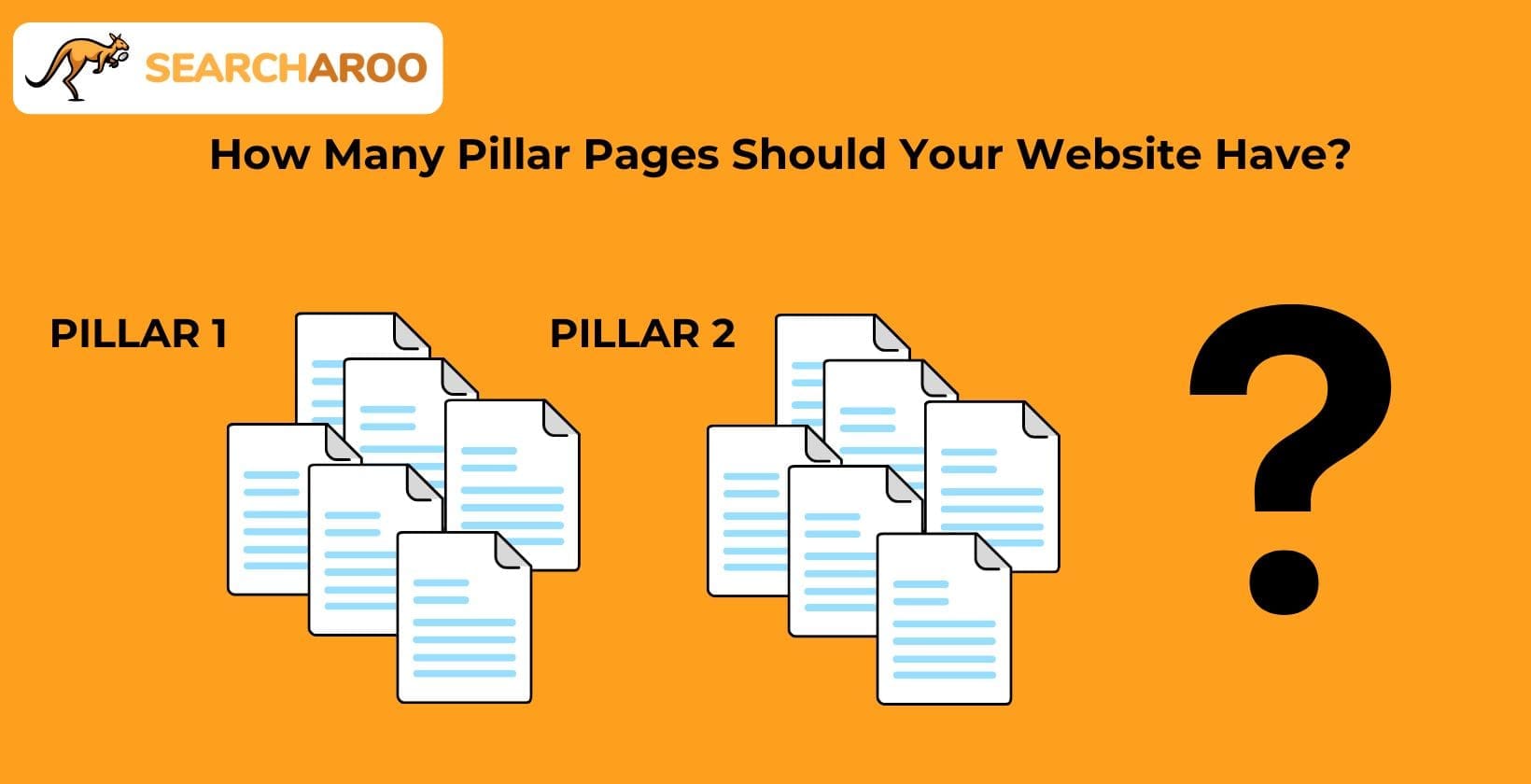
A website should have one pillar page for each major topic or service area. The number of pillar pages depends on the offerings and topics that can expand into subtopics. Sufficient pillar pages ensure comprehensive coverage, allowing users to find relevant information and improving site performance and user experience.
Examining successful pillar content strategies helps understand this approach in practice.
Can you show examples of successful pillar content strategies?
Examples of successful pillar content strategies include HubSpot’s marketing blogs and Moz’s Beginner’s Guide to SEO. These platforms use pillar pages to cover broad topics, linking to detailed articles. Similarly, Searcharoo has implemented effective pillar content strategies across industries, improving traffic, engagement, and backlink quality. These examples demonstrate the power of well-structured pillar strategies in boosting site visibility.
Selecting the right keywords is essential for optimizing pillar content and achieving similar success.
How do we choose the right keywords for our pillar content?

Choosing the right keywords for pillar content involves identifying high-volume, relevant terms that align with user intent. Advanced keyword research pinpoints terms that resonate with the target audience. Targeting primary and long-tail keywords increases search rankings, driving organic traffic and improving content visibility.
Once the right keywords are selected, using effective tools to develop and refine the pillar content strategy is essential for content optimization.
Optimizing pillar content for maximum SEO benefit requires strategic keyword placement, comprehensive topic coverage, proper HTML structure with appropriate heading tags, schema markup implementation, and mobile-friendly formatting that enhances user experience across all devices.
What tools assist in developing a pillar content strategy?
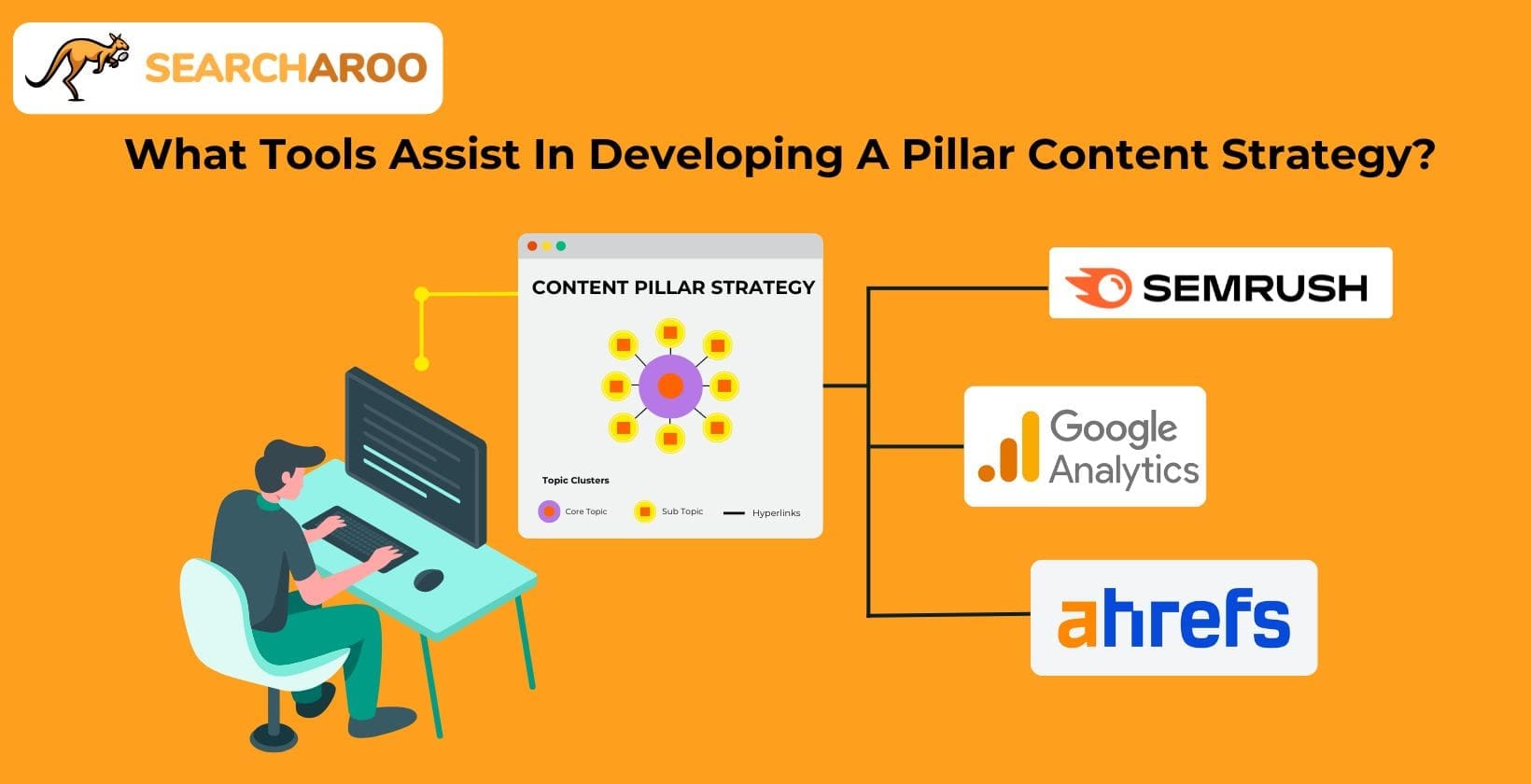
Tools like SEMrush, Ahrefs, and Google Analytics are essential for optimizing a pillar content strategy. They provide insights into keyword research, backlink profiles, and content performance metrics.
- SEMrush identifies high-volume keywords, analyzes keyword difficulty, and tracks competitor activity, ensuring targeted and effective pillar content.
- Ahrefs tracks backlinks, monitors competitor strategies, and identifies outreach opportunities, helping build a stronger backlink profile.
- Google Analytics measures user engagement metrics like time on page and bounce rates, refining the pillar content strategy to meet audience needs.
Regular updates and revisions are essential to maintaining the relevance and accuracy of pillar content in response to changing market conditions and search engine algorithms.
How often should pillar content be updated?
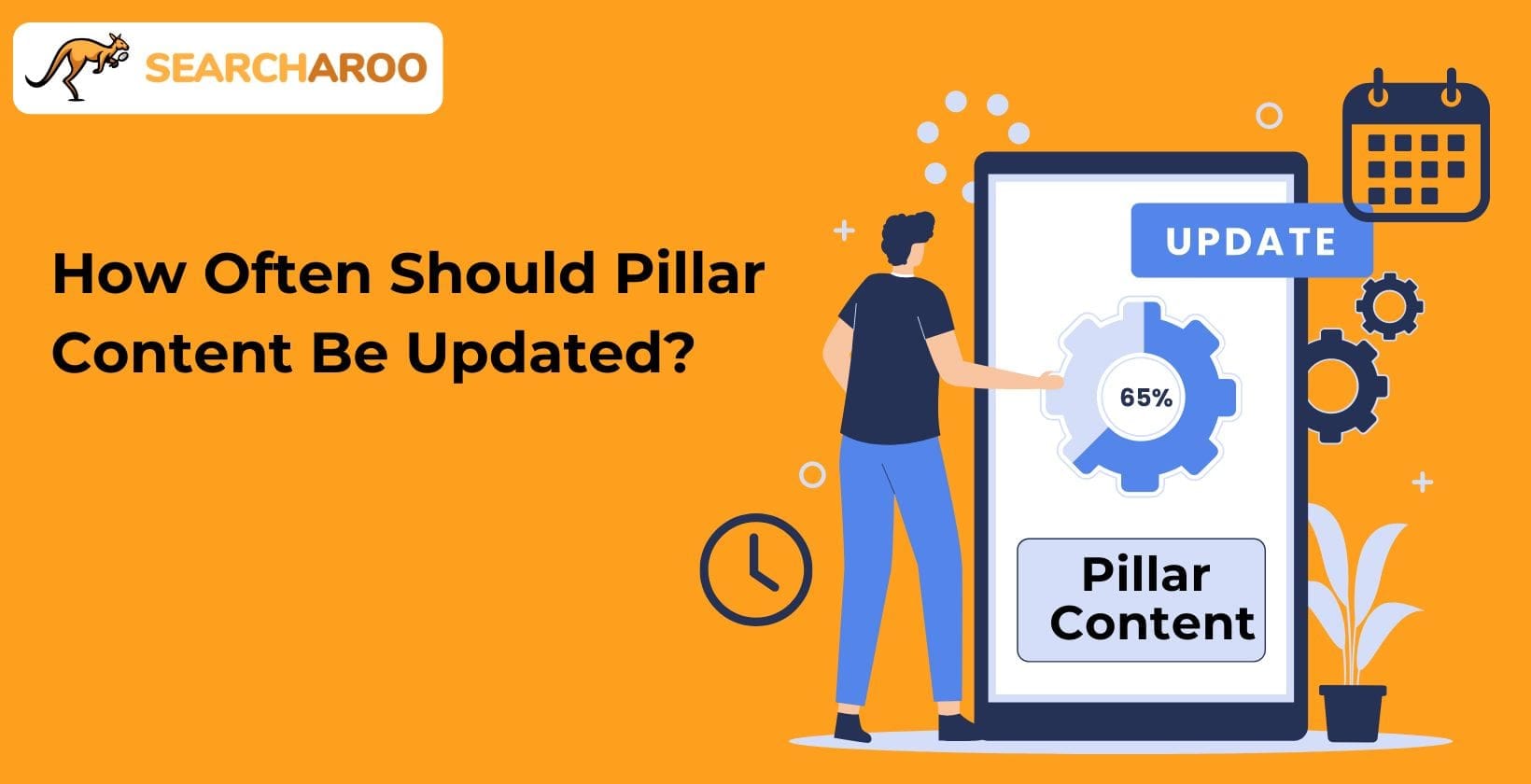
Pillar content should be updated every six to twelve months to stay relevant, accurate, and aligned with SEO trends. Regular updates ensure competitiveness, enhance website authority and improve search engine rankings.
Integrating updates with your existing content marketing strategy maintains a cohesive approach and drives better results.
How do we integrate pillar content with our existing content marketing efforts?
Integrating pillar content with existing content marketing efforts involves aligning it with the overarching content strategy to support key business objectives. Pillar content should complement blog posts, social media, and other marketing materials to create a unified experience, enhancing user engagement and search engine visibility. This alignment increases traffic and amplifies the impact of your content marketing.
Understanding the role of subtopics strengthens the overall content strategy by fully leveraging their potential.
What role do subtopics play in a pillar content strategy?
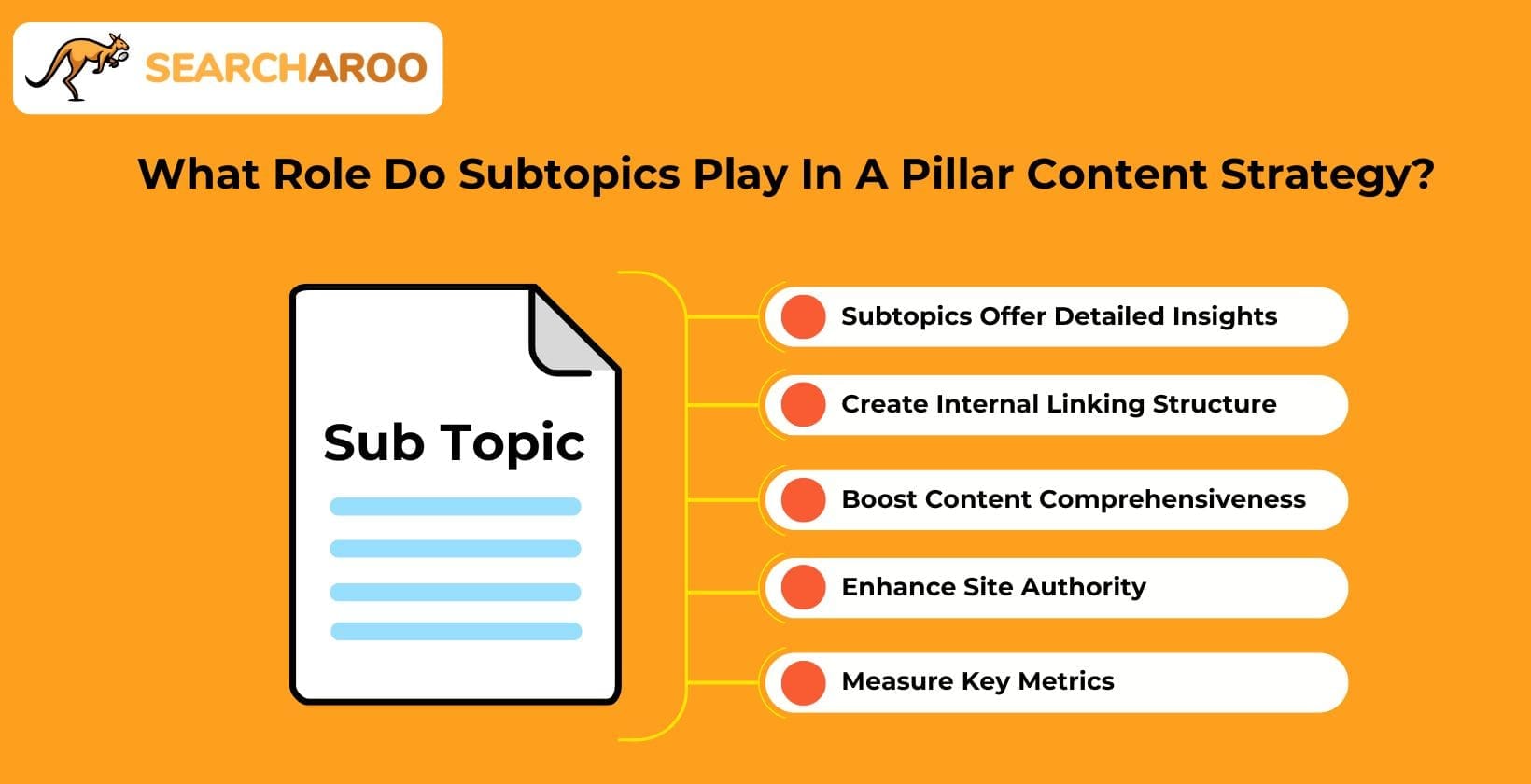
Subtopics form topic clusters that provide detailed insights into specific aspects of the broader pillar content, creating a content ecosystem where each cluster reinforces the authority of the main pillar page. They link to and from the pillar page, creating a strong internal linking structure that enhances SEO and user experience. Subtopics ensure the content is comprehensive, boosting site authority and improving search rankings.
Measuring key metrics is essential to evaluate the effectiveness of the pillar content strategy.
How do we measure the success of our pillar content?
The success of pillar content is measured by tracking specific metrics including organic traffic growth, keyword rankings improvements, user engagement metrics (time on page, bounce rate, pages per session), and the number and quality of backlinks generated from authoritative domains. These metrics assess the content’s performance in achieving visibility, increasing traffic, and improving engagement.
Identifying and designating the team responsible for creating and maintaining pillar content ensures sustained performance and relevance.
Who will be responsible for creating and maintaining our pillar content?
Content marketing teams, copywriters, and SEO specialists are responsible for creating and maintaining pillar content. Their collaboration keeps the content relevant, up-to-date, and aligned with SEO best practices, ensuring the effectiveness of the content strategy.
Coordinating the content development process requires considering the costs of developing a comprehensive pillar content strategy.
How much does it cost to develop a pillar content strategy?
The cost of developing a pillar content strategy depends on the complexity of topics, the number of pillar pages, and the depth of research required. A well-planned strategy delivers high ROI by improving SEO performance and driving long-term growth. Failing to invest in a pillar content strategy risks losing a competitive advantage in digital marketing.
What are the risks of failing to implement a pillar content strategy?
Failing to implement a pillar content strategy risks losing key SEO advantages, such as higher search rankings, increased organic traffic, and better user experience. With structured content, businesses may be able to compete and gain authority and visibility. Planning a pillar content strategy mitigates these risks and helps maintain competitiveness.
How can we get started with Searcharoo for planning our pillar content strategy?
To implement a pillar content strategy with Searcharoo, businesses should contact our team to discuss their business goals, content setup, and SEO objectives, followed by developing a content calendar that prioritizes pillar pages based on business relevance and search volume.
We will develop a tailored pillar content strategy that aligns with your needs, helping you gain a competitive edge. Searcharoo’s expertise ensures your content attracts traffic, improves visibility, and enhances your digital presence, driving measurable growth.
